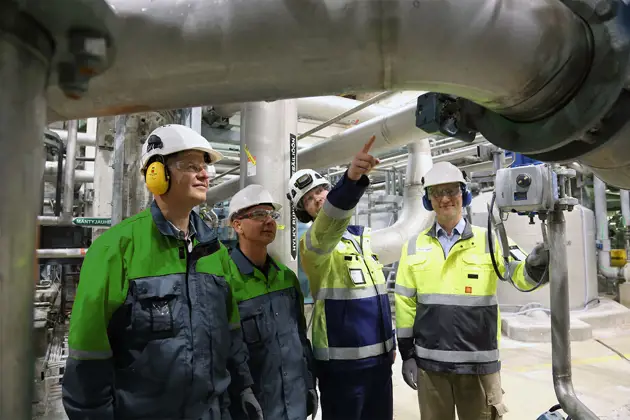The noise created by throttling gas or steam flows, called aerodynamic noise, can be abated in various ways. The basic techniques can be divided into source treatment, i.e. valve and trim modification whereby the generation of excessive noise is prevented, or path treatment, in which generated noise is dampened.
While path treatment may be able to dampen noise through insulation and other silencers, it is not a solution that can eliminate or prevent mechanical vibrations or the subsequent noise. Source treatment, on the other hand, can actually prevent high levels of mechanical vibration associated with noise by using methods such as velocity control, acoustic control, location control and by using diffusers or static resistors. In control valves, used methods include flow division into multiple streams, pressure staging, creating a frictional flow path and the controlled use of shock waves.
Using Q-trim technology where the complete solution is inside the quarter turn valve brings numerous advantages to the user. With no additional external components along the pipeline, the layout design is simplified and installation and inspection becomes faster and easier. The same goes for the service of the valves, especially when paired with a smart valve positioner such as the ND9000™. Another important advantage using rotary valves in noise attenuation solutions is their capability to handle impurities and dirty fluids, which helps avoid clogging, jamming and increased friction and wear, ultimately ensuring the continued optimal operation of the valve with a high level of accuracy and reduced need for regular maintenance over the valve’s entire lifetime. By using quarter turn control valves with Q-trim technology the maintenance period of the plant can be extended.
Neles Q-trim technology has been the preferred noise attenuation solution with quarter turn valves for more than 30 years. The new Q2-trim is the second generation of Q-trim technology, which is designed to reduce high aerodynamic noise to a tolerable level. The design itself utilizes the same techniques and follows the same principle as Q-trim, but brings noise attenuation capability to a whole new level of performance.
The idea behind the research that lead to the Q2-trim’s conception was to combine the benefits of the first generation technology while simultaneously solving aerodynamic noise problems without additional static resistors like diffusers and fixed resistors. The Q2-trim completes the Q-trim offering and provides new enhanced noise attenuation capabilities to Neles’ noise attenuation solution portfolio. Trim selection can now be easily made with Nelprof™ Sizing software so that the control valve is always selected according to process parameters and requirements.
Ultimately, with Q-trim technology you can fulfill health & safety legislation, ensure a safe working environment for personnel and protect your process plant and surroundings while at the same time increasing efficiency and reliability. Maintaining control performance for the required period is the foundation of reliable long lasting flow control.
